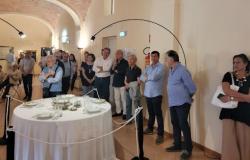LECCE – Salento risks becoming Italy’s landfill. For several months, environmentalists and scientists have been afraid of seeing the area transform into a national waste hub. A real industrial center for the treatment and disposal of special, dangerous and non-hazardous waste. All this in the face of poor political planning, in a climate of deregulation which makes the traceability of waste within the supply chain more complex and lays the foundations for potential illicit trafficking.
In the area – affected by a high incidence rate of tumor pathologies – the need for treatment of biodegradable waste is around 100 thousand tons per year (data available through the Regional Waste Plan). Many of those identified by the regional urban waste management plan. However, the province of Lecce could see the share of waste, both dangerous and non-hazardous, received and processed in the treatment and storage plants rise to 3 million tonnes per year if the new industrial mega-plants awaiting authorization from the Province were also added of Lecce and those in the project. We are talking about at least thirty entities, all of which can be consulted on the Province’s noticeboard, including expressions of interest and projects already awaiting authorisations.
Among the various sites that cause concern, the Corigliano d’Otranto landfill, designed on the water table where the pumping wells of the Pugliese Aqueduct are located, to provide drinking water to the community. Among other fears is the incineration of waste (secondary solid fuel) inside the Colacem cement factory in Galatina. And then, again, there are about ten plants for the treatment of special waste and biogas plants, in addition to the request to increase the capacity of the already existing plants.
Yet, the average annual production of special waste in Italy is around 2.5 tonnes per capita (around 147 million tonnes for 59 million inhabitants). “In the municipalities of Galatina and Galatone alone there is a concentration of treatment capacity of at least 800 thousand tonnes per year, corresponding to an average capacity of around 20 tonnes per inhabitant and per year”, say environmentalists and doctors involved in the disputes and in the document they shared with mayors, Palazzo dei Celestini, Arpa (regional agency for environmental protection) and the Puglia Region.
Concerns are mounting among environmentalists and part of the medical community, especially for the inland area, the “cursed” one between Galatina and Soleto, where the alarming epidemiological data and where, at the same time, there is the greatest concentration of so-called “first class”, i.e. those considered harmful and which should be distanced from inhabited areas. The incineration of waste in cement factories, for example, has obtained approval from President Michele Emiliano to be able to burn the CSS. The governor had in fact said he was without ideological preclusions during the edition of the General States of Waste in Puglia, in Bari in March.
A worrying environmental and health situation, which we have already told you about in the past and which emerged in the Protos report, a dossier on the risk factors for lung cancer in the area, which shows the persistence of a cluster area for cancer that affects men in the municipalities of the Galatina hinterland. There are two concerns: any authorizations that the Province could grant to waste plants; and the possibility that the Municipality of Galatina will follow up on the increasingly acclaimed idea in political circles of burning waste in the cement factory. Apprehensions that led the local committees to organize a meeting for Wednesday 26 June, in the center of Galatina, involving politicians, scientists and all the main local associations to put a stop to the “colonisation” of the territory by the waste industries.
LeccePrima is also on Whatsapp. Follow us on our channel.





